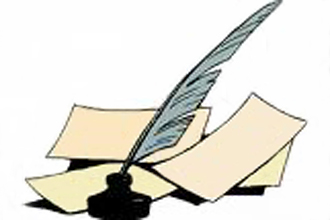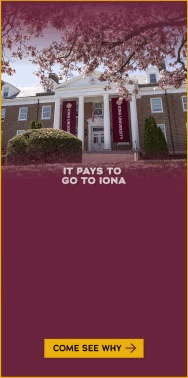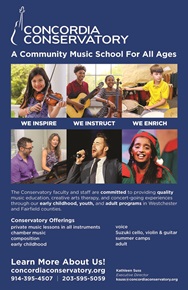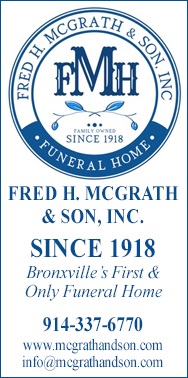Letter to the Editor: Dr. Elizabeth Maher on Stadium Lights and Medical Risk to Community

To the Editor:
In their recent letter to the editor regarding stadium lighting on Chambers Field, Drs. de Serres, Jones, and McKhann acknowledge the AMA position paper from 2012 in which ill-timed exposure to artificial light is cited as a potential medical risk, particularly with regard to the increased risk of breast cancer. The initial studies involve cancer risk in shift workers, and the mechanism of the increased risk is excessive light exposure. The authors conclude that these studies do not apply to our village because these are two different lighting scenarios.
There are numerous scientific and epidemiologic studies that support a very different conclusion.
Circadian rhythm disruption occurs when melatonin, the production phase of which begins at dusk, is artificially suppressed by exposure to light. Melatonin suppression directly affects a large number of immunoregulatory mechanisms that result clinically in increased cancer rates as well as obesity, depression, and diabetes.
There are four light variables responsible for melatonin suppression: timing, exposure duration, light intensity and wavelength. Recent studies show that wavelength is the most important variable, and the typical metal halide lights used for stadiums have a highly unfavorable wavelength spectrum, with peaks at 497 nanometers and 540 nanometers, and which is 3.5 times as powerful in suppressing melatonin as typical indoor lighting. With light in this spectrum, it takes very low levels of luminance and very short durations of exposure to produce very large reductions in melatonin. Multiple studies show suppression at durations of 2 hours and less (Cajochen 2005, Gronfier 2004).
The European Commission convened the Scientific Committee on Energy and Newly Identified Health Risks (SCENIHR) resulting in the publication of "Health Effects of Artificial Light" on March 12, 2012. This paper highlights consistent epidemiological support regarding potential circadian disruption resulting from "high community light levels." Kloog et al. in 2010 reported very significant increased rates of breast cancer in countries with the highest levels of nighttime illumination from various outdoor sources in urban/suburban communities.
Worldwide, breast cancer is the most common cancer among women, excluding skin cancers. Circadian disruption has been suggested by some to be a significant risk factor in developing breast cancer (Fu 2003, Keith 2001). "Light at night is likely to be one of a number of factors that contributed to the increase in breast cancer over the last few decades," states Les Reinlib, the program director of the NIEHS.
The KG&D Architects presenter cited levels of light trespass of 0.1-0.2 ft. candles at ground level in homes adjacent to the field, and he also stated that light levels would be exponentially higher, and very bright at the second- and third-floor bedroom level. His estimation did not include the additional light trespass from the lower-tier lights, which would be nearly at the level of the portable lights used at homecoming, and likely directed away from the field toward private properties.
To summarize the problem: the private homes near Chambers would be subjected to a substantial amount of invasive light of a high-risk wavelength at the inopportune onset of dusk, six days per week in consecutive fashion, for many hours and without relief. All of the scientific and epidemiological evidence to date supports real, unquantifiable, but potentially very far-reaching risks for families in the area should stadium lights be installed on Chambers Field.
The relevant factors for the issue of health risk that must be introduced in the lighting discussion are twofold:
1. The extreme proximity of many homes to the field itself presents a high exposure factor.
2. The imposition of the potentially harmful luminance is not a choice--this is an imposed risk exposure delivered selectively to nearby Bronxville community residents only, who have no way to avoid or control their exposure.
The environmental nature of the risks associated with the imposition of light trespass from very close stadium lighting installations has many corollary examples from which the Bronxville community can draw important parallels and comparisons. Until just about 10 years ago, it was fairly common to be routinely exposed to "second-hand," or environmental, tobacco smoke: in the office, restaurants, bars, and sports venues. For decades, environmental tobacco smoke was considered a mere "annoyance." Eventually, medical research demonstrated that second-hand smoke proved to be a risk factor for coronary artery disease and lung cancer, often to the detriment of a non-smoking spouse or child. We now have laws that regulate smoking in public to minimize the risks to the community at large.
The difference here is that when exposed to environmental tobacco smoke, one can generally walk away, even if it imposes an inconvenience. With potential stadium lighting, families cannot immediately relocate to minimize their exposure. Stadium lighting in such close proximity to private homes is exceptionally rare in the suburban NYC tristate area. There is no medical or educational entity that would meet acceptance from their institutional research board for a study that subjects the participants to a potentially harmful exposure without their consent or ability to withdraw.
Most public and private organizations faced with similar circumstances would seek to minimize and eliminate unquantifiable risks--particularly potential health risks--by responsibly pursuing alternative courses of action.
Accordingly, I applaud the Bronxville Board of Education for their continued pursuit of alternative field options which can increase "sports team hours." I am confident that among these many options, the additional field space can be identified. Importantly, this approach responsibly acknowledges the potential for unquantified, but extant, health risks which would be unfair and unethical to impose on fellow community members.
Elizabeth Maher, MD
Associate Director of Ophthalmic Plastic Surgery
New York Eye and Ear Infirmary
15 Field Court, Bronxville, NY 10708
Editor's Note: MyhometownBronxville does not fact-check statements in letters to the editor, and the opinions do not necessarily reflect the thinking of its staff. Its objective in publishing letters to the editor is to give air to diverse thoughts and opinions of residents in the community.
Letters Directory
Bronxville is a quaint village (one square mile) located just 16 miles north of midtown Manhattan (roughly 30 minutes on the train) and has a population of approximately 6,500. It is known as a premier community with an excellent public school (K-12) and easy access to Manhattan. Bronxville offers many amenities including an attractive business district, a hospital (Lawrence Hospital), public paddle and tennis courts, fine dining at local restaurants, two private country clubs and a community library.
While the earliest settlers of Bronxville date back to the first half of the 18th century, the history of the modern suburb of Bronxville began in 1890 when William Van Duzer Lawrence purchased a farm and commissioned the architect, William A. Bates, to design a planned community of houses for well-known artists and professionals that became a thriving art colony. This community, now called Lawrence Park, is listed on the National register of Historic Places and many of the homes still have artists’ studios. A neighborhood association within Lawrence Park called “The Hilltop Association” keeps this heritage alive with art shows and other events for neighbors.
Bronxville offers many charming neighborhoods as well as a variety of living options for residents including single family homes, town houses, cooperatives and condominiums. One of the chief benefits of living in “the village” is that your children can attend the Bronxville School.
The Bronxville postal zone (10708, known as “Bronxville PO”) includes the village of Bronxville as well as the Chester Heights section of Eastchester, parts of Tuckahoe and the Lawrence Park West, Cedar Knolls, Armour Villa and Longvale sections of Yonkers. Many of these areas have their own distinct character. For instance, the Armour Villa section has many historic homes and even has its own newsletter called “The Villa Voice” which reports on neighborhood news.
Village of Bronxville Administrative Offices
337-6500
Open 9:00am - 4pm excluding holidays and weekends
Bronxville Police Department
337-0500
Open 24 hours
Bronxville Parking Violations
337-2024
Open 9:00am - 4pm excluding holidays and weekends
Bronxville Fire Deparment
793-6400







